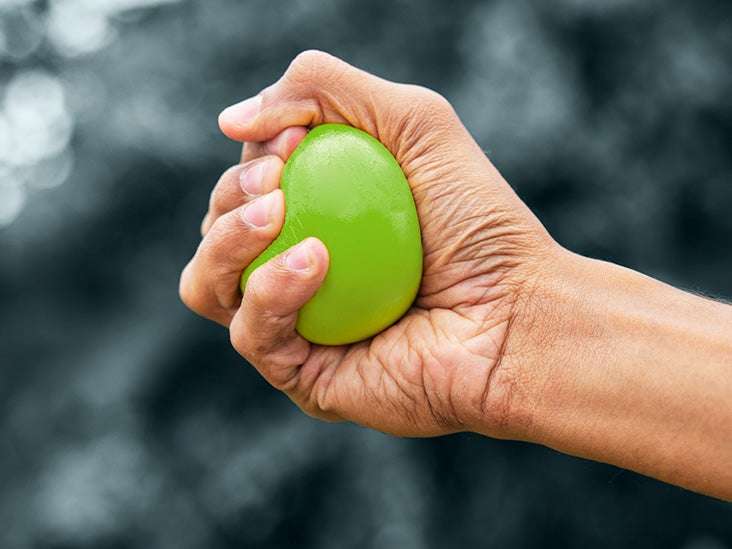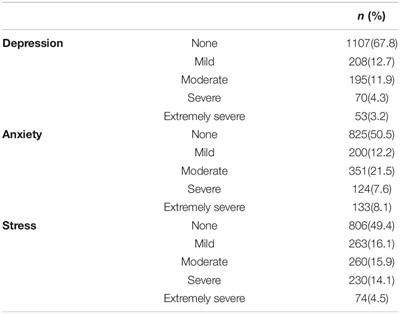Arthritis refers to joint inflammation. It can be a very painful condition. Hand arthritis is particularly difficult to manage, but certain exercises can help reduce pain and stiffness.
In this article, learn about hand exercises for arthritis, with specific instructions and advice.
This article will also cover some other treatment options for arthritis.
Hand exercises
Hand exercises can reduce pain, stiffness, and swelling while improving joint flexibility.
The key is to do the exercises regularly. Also, developing a routine will help maintain that consistency.
While doing these exercises, be sure to move slowly, breathe deeply, and stop if there is any tension or pain. Also, check with a healthcare professional or physical therapist for the best routine.
Here are some recommended exercises for hand arthritis:
1. Hand clench

- Begin by straightening the fingers out.
- Slowly bend the hand into a fist.
- Keep the thumb on the outside of the hand.
- Hold this position for a couple of seconds, then repeat.
- Do around 10 reps once per day. People can do so more regularly if the exercise is comfortable and pain-free.
2. Thumb and finger lift
- Place the hands on a table, palm down and body-width apart.
- Begin by lifting the thumbs off the table as far as is comfortable and holding for 5 seconds, then rest.
- Repeat with the index finger, then the following fingers in turn.
- While one finger is raised, make sure that the others remain flat.
- Complete 10 sets around twice per day.
3. Thumb stretch

- Looking at the palm of the hand, relax the fingers into a neutral position.
- Bend the thumb across the palm, touching the bottom of the small finger. If this is difficult, just stretch as far as possible.
- Repeat multiple times with each hand.
4. Finger and thumb touch

- From the same position as the thumb stretch, bring the tip of the thumb together with the tip of each finger one by one.
- Complete 10 sets twice per day on each hand.
5. Side-to-side wrist bend

- Place the forearm flat on a table, with the palms of the hands facing down.
- Bend the wrist as far as possible to the left, hold for 2 seconds, then bend the wrist back to the center.
- Repeat this movement to the right, hold for 2 seconds, then move back to the center. This is one set.
- Complete 10 sets twice per day on each hand.
6. Finger curl
- Hold the hand up with the fingers straight and close together.
- Bend the end and middle joints of fingers tightly until the fingertips touch the skin on the hand.
- Slowly return the fingers to a vertical position.
- Repeat the finger curl 10 times twice per day.
7. Ball exercises

Many exercises work well with a stress ball, soft ball, or tennis ball. They help increase flexibility and improve strength.
Such exercises include:
- Full grip: Perform this exercise a couple of times each week, with a few days of rest in-between.
- Squeeze a stress ball in the hand as hard as possible.
- Release after a few seconds.
- Repeat 10–15 times on each hand.
- Palm press:
- Place a stress ball between the palms, with the forearms in a vertical position.
- Press and hold for 3–5 seconds, then release.
- Repeat 10 times.
- Finger grip:
- Place a stress ball between the tip of a finger and the thumb.
- Press and hold for 3–5 seconds, then rest.
- Repeat 10 times with each finger, rest for 1 minute, then do the same with the other hand.
- Roll to and fro:
- Roll a stress ball from the palm up to each thumb and finger individually, gently stretching each digit.
- Roll the ball back down to the palm.
- Repeat.
8. Soft hand massage
To perform a soft hand massage, massage the palm with the opposite thumb using short strokes. Also, massage the fingers starting at the tips, then pushing down toward the palms.
Always remember to be gentle with each exercise and stop if they become painful.
Causes and symptoms
The Centers for Disease Control and Prevention (CDC) say that osteoarthritis is the most common form of arthritis, affecting more than 32.5 million people in the United States.
Osteoarthritis occurs when the cartilage between the joints wears down as a person gets older. This causes pain and inflammation in the affected area of the body.
Other symptoms can include:
- aching
- stiffness
- a reduced range of motion
- reduced flexibility
- swelling
Inflammatory types of arthritis include rheumatoid arthritis, psoriatic arthritis, and ankylosing spondylitis. In these types of arthritis, the immune system attacks the cartilage between joints.
Learn more about the symptoms of rheumatoid arthritis here.
Hand arthritis can also develop due to trauma, such as fractures. This is known as post-traumatic arthritis. An injured joint is more vulnerable and therefore more likely to become arthritic than a healthy joint.
Numerous other factors can cause hand arthritis. These include:
- Joint overuse or injury: Repetitive use of specific joints can contribute to an increased risk of osteoarthritis. Broken and dislocated bones can also increase the risk.
- Sex: According to the CDC, women are more likely to develop osteoarthritis than men, especially after the age of 50. Also, one 2017 study reveals that the lifetime risk of symptomatic hand osteoarthritis is much higher among women.
- Age: Because the joints degenerate over time, older adults are more at risk.
If any symptoms of arthritis arise, it is important to address them.
Other treatments
Hand exercises are not the only option to relieve pain and increase mobility in osteoarthritis. In fact, there are a wide range of other treatment options available.
The sections below will look at these in more detail.
Pain relief medications
Findings from a 2019 study revealed that prescription prednisolone, which is a steroid, can be an effective treatment for inflammation.
Another effective steroid treatment includes injections of cortisone. This is a powerful anti-inflammatory, and it can relieve symptoms for several weeks at a time.
If a person is looking for OTC treatments for relief, one 2010 review states that ibuprofen is effective at relieving pain and inflammatory symptoms in many types of arthritis.
However, it is important to speak with a healthcare professional before using any medication to help manage arthritis symptoms.
Protective splints
Using a protective splint can reduce strain on the joints.
Resting splints can help alleviate pain in arthritic hands. They support the joints and allow those in the hand to rest. They also help reduce inflammation.
Heat and cold therapy
Heat and cold therapy can alleviate pain in arthritic hands.
When using a heat pad, apply the heat two to three times per day for 20–30 minutes. Paraffin wax provides moist heat, which can also be effective in reducing pain.
When using a cold pack, hold it against the hand for 10–20 minutes at a time, with a towel or pillowcase between the skin and the cold pack.
In severe cases of arthritis, particularly in the fingers, a doctor may recommend surgery. However, they would explore all other treatment options first.
Summary
Hand arthritis can have a major impact on day-to-day life, so it is important to seek treatment as soon as possible. Although medication is an option, doctors tend to recommend a hand exercise routine.
Eating a healthful diet and making positive lifestyle choices will help prevent the onset of some types of arthritis.
After receiving a diagnosis, a person can still play an active role in controlling their symptoms and pain levels.
I treat a lot of individuals who are experiencing wrist, thumb and hand problems. A large majority of these individuals come in with pain at the base of the thumb.
With this presentation, it can be quite painful to grip objects and the symptoms can often be aggravated by a repetitive task like cutting with scissors or even using a computer mouse. In my practice, I find that a major contributor to this type of dysfunction is overuse of a specific muscle in the palm of the hand that lies between the thumb and middle finger called the adductor policis muscle.
This commonly overused muscle is especially vulnerable when patients are gripping or manipulating objects which require more power from their hand muscles. Thumb motion is a carefully co-ordinated dance between several muscles and imbalances such as the one mentioned above have consequences.
Using one muscle more than the others puts asymmetrical pressure on the surfaces of the small joint that connects the thumb to the wrist (the 1st carpometacarpal joint). Over time, this joint wears down and becomes painful. It can become reddened and swollen. It is thought to be more common in women because the thumb joint does not fit together quite as well as mens’ and their hands are smaller in general.
Well-intentioned friends will often give sufferers ‘stress balls’ to squeeze to make their hands stronger. Unfortunately, the gripping compounds the problem and the thumb joint swells even more. Squeezing a stress ball overuses the muscle in the palm (the adductor policis muscle) that was the problem in the first place. Stretching the muscle and strengthening the other small muscles around the thumb are key to improving muscle balance.
Believe it or not, the hand has good posture to consider too! Working with a knowledgeable physiotherapist to correct some hand posture habits and sometimes using a brace to support the area can be important strategies to control flare ups. But please do NOT use a stress ball!
Contact us today if you would like to book a consultation with one of physiotherapists and make those hurting hands happy again!




